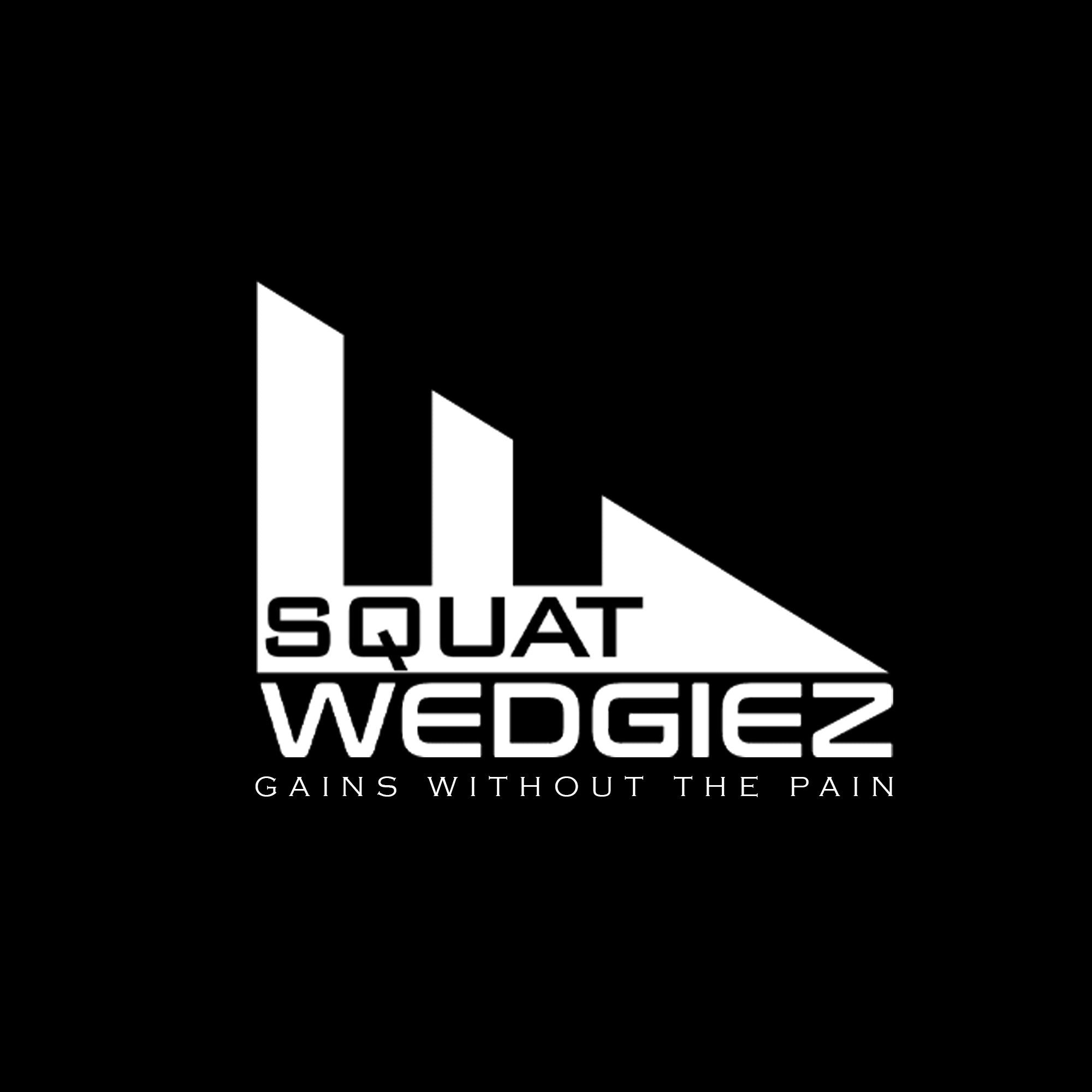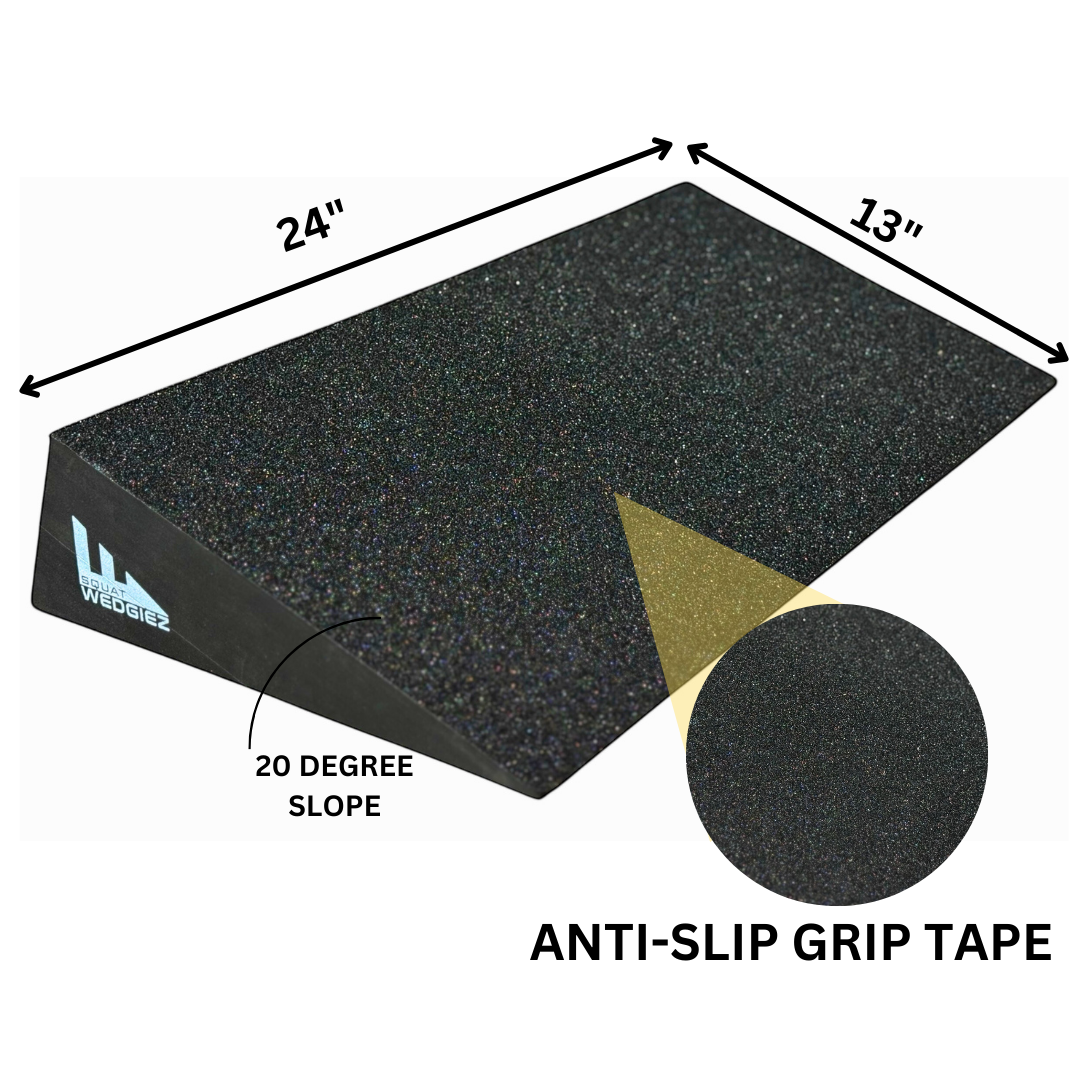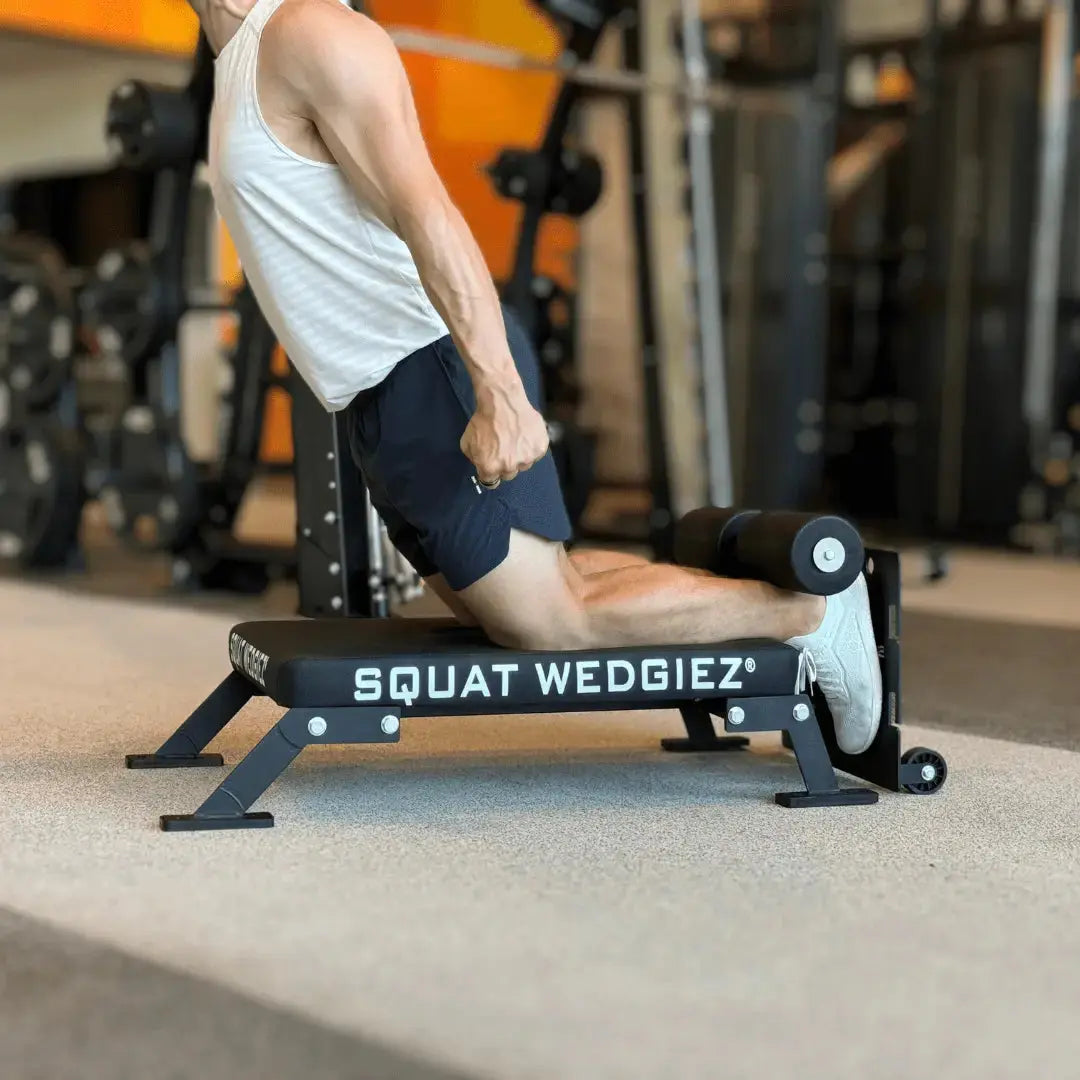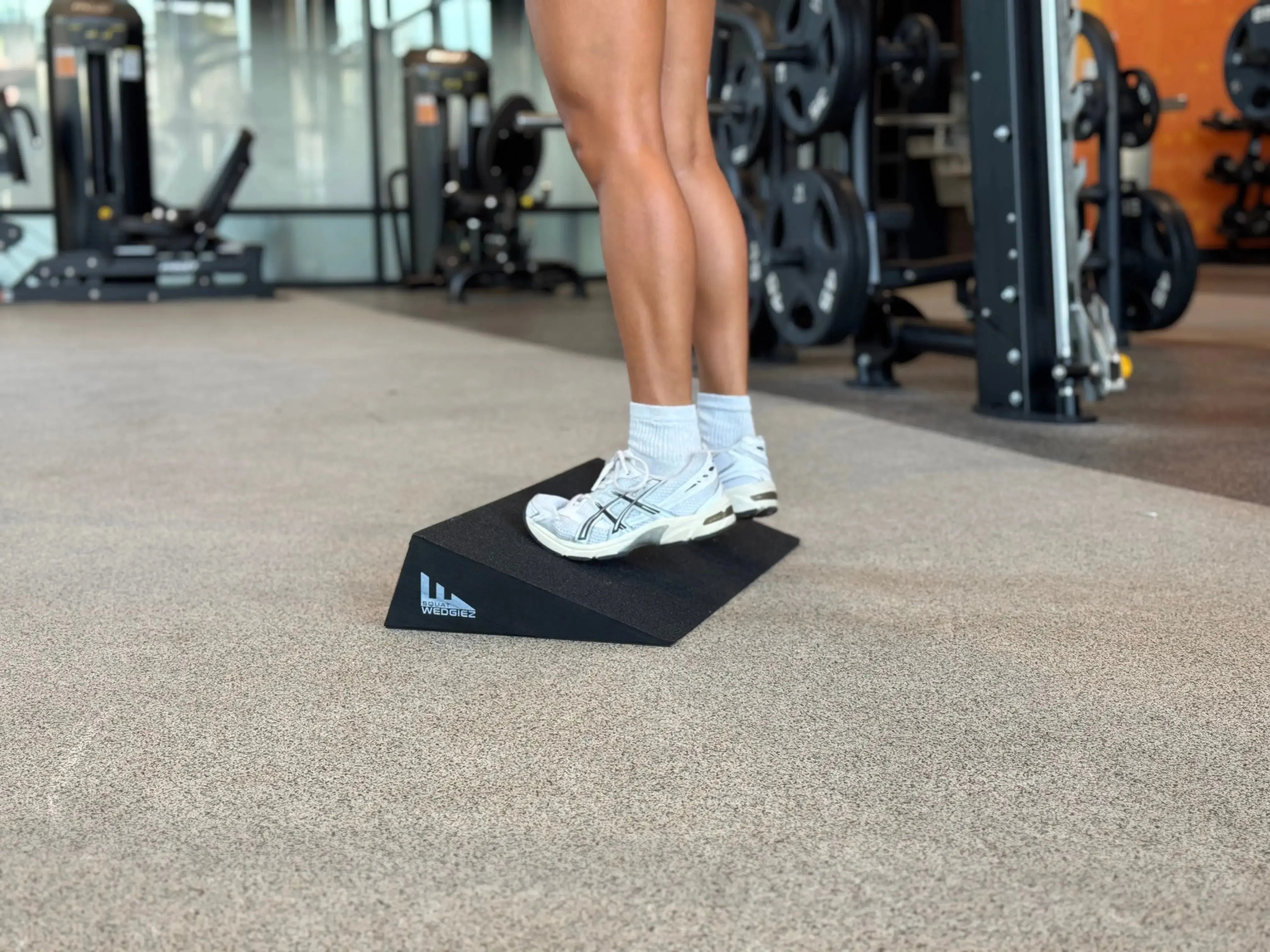At SquatWedgiez, we get this question from our customers all the time: "Which squat wedge or slant board is right for me?" We know that choosing the proper angle can be confusing, so we wanted to bring some clarity to the topic. Whether you're new to squats or a seasoned lifter, understanding the benefits of heel-elevated squats can make a big difference in your performance and safety.
Choosing the Perfect Squat Wedge: Find Your Ideal Angle
When selecting a squat wedge or slant board, the right angle is key. Elevating your entire foot between 5° and 20° can improve your squat depth and shift stress from your lower back to your legs.
Finding Your Ideal Angle
-
Flatter Slope (≈5°):
A gentle incline subtly adjusts your foot positioning. With a flatter slope, you may lean forward slightly—shifting the load to your hips rather than emphasizing your quadriceps. If your goal is to maximize leg engagement, a very shallow slope might not deliver optimal results. -
Steeper Slope (≈20°):
A steeper angle promotes an upright torso, channeling more load onto your thighs. However, be cautious: an angle that's too steep can push your center of mass forward, making it challenging to properly engage your hips during the squat.
In my 11+ years as a personal trainer, I’ve found that a 15-degree slope strikes the perfect balance. This angle reduces lower-back tension without overloading your knees, and it’s versatile enough for calf raises, hip thrusts, and split squats. The 15° wedge encourages optimal hip flexion, enhancing your squat pattern and overall performance.
Who Benefits from a Steeper Wedge?
If you have limited hip and ankle mobility or prefer to target your thigh muscles, a 20-degree slant board may be your best option. At this angle, your torso stays more upright, increasing the load on your thighs and knee joints. But remember—more isn’t always better. Exceeding 20° can shift your center of mass too far forward, making it harder to properly load your hips.
Whole Foot vs. Heel-Only Elevation: Why It Matters
A common question we hear is, “Can't I just walk down the slant board?” The answer lies in natural biomechanics. When you squat, your knee travels over your toes, causing your foot to widen and your arch to flatten. Elevating your whole foot mimics this action, shifting your center of mass backward and allowing your foot and ankle to move naturally.
In contrast, elevating only the heel—especially on a steep slope—forces your toes into extension. This pushes your center of mass forward and disrupts your natural movement. If you feel excessive pressure on your toes or find yourself leaning forward, the slope might be too steep for heel-only elevation.
In Summary
Choosing the right slant board angle depends on your goals, needs, and body mechanics:
-
20-Degree Slope:
Best for calf raises, hip thrusts, or for those with tight hips and ankles needing a more upright posture. -
15-Degree Slope:
Ideal for refining your squat technique and reducing lower-back strain—an excellent all-around choice. -
Flexibility:
If you want the best of both worlds, consider a longer slant board that lets you adjust between angles (from 5° to 20°) based on your training needs.
Still unsure which angle suits you best?
Try Our Pick Your Wedgie Quiz to answer a few quick questions about your training goals and discover the perfect wedgie for your routine.
By choosing the right angle, you can optimize your squat performance, reduce injury risk, and build a stronger, more balanced lower body. We hope this post clears up any confusion and helps you make an informed decision. Happy squatting!
.





Leave a comment
This site is protected by hCaptcha and the hCaptcha Privacy Policy and Terms of Service apply.